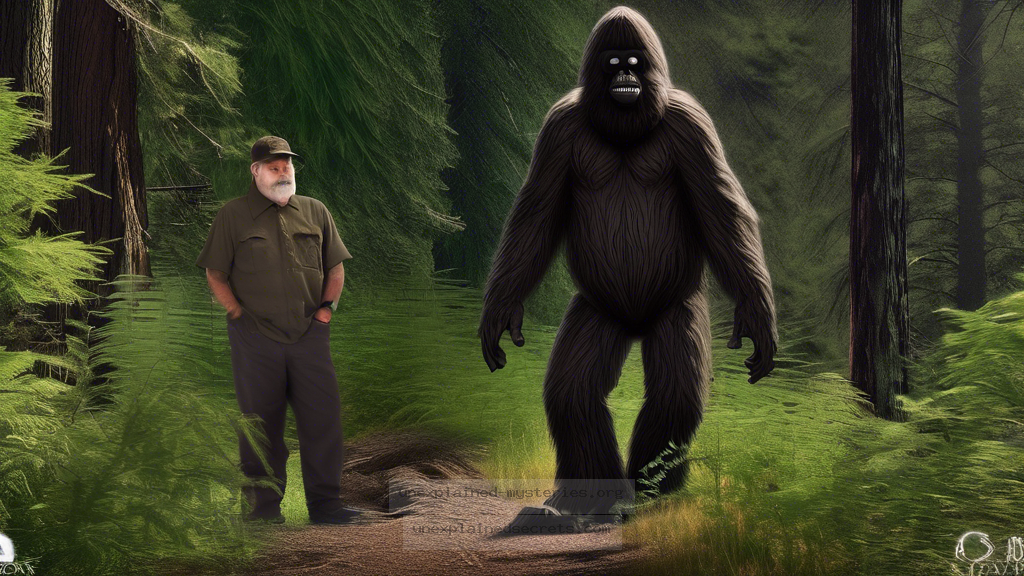What Really Happened During the 1967 Patterson-Gimlin Film Encounter with Bigfoot?
What Really Happened During the 1967 Patterson-Gimlin Film Encounter with Bigfoot?
The Patterson-Gimlin film, recorded in Bluff Creek, California, on October 20, 1967, is one of the most debated pieces of evidence in the world of cryptozoology. Was it an elaborate hoax, or did it capture a genuine glimpse of Bigfoot? This question matters significantly as it not only shapes public perception of this elusive creature but also influences ongoing investigations into its existence. In this post, we’ll delve into the details surrounding this iconic footage, examining the historical context, core theories, evidence, and much more.
The Historical Context of the Patterson-Gimlin Film
To understand the significance of the Patterson-Gimlin film, we must first explore its historical context. In the 1960s, reports of Bigfoot sightings were becoming increasingly common in the Pacific Northwest. The concept of Bigfoot, or Sasquatch, had been present in Native American folklore for centuries, but the modern interpretation rose to prominence in this era. The film was recorded by Roger Patterson, an amateur filmmaker, and Bob Gimlin, a cowboy, who were on an expedition to film and search for evidence of Bigfoot.
The pair claimed to have encountered the creature while riding horses along Bluff Creek. As they approached, Patterson quickly set up his camera, capturing what would become the most famous footage of Bigfoot in history. The film shows a large, bipedal creature walking through the forest, and it has been analyzed and scrutinized for decades.
The Core Concepts Behind the Film
The Patterson-Gimlin film has sparked numerous theories regarding its authenticity. Supporters of the film argue that the creature depicted exhibits characteristics that are inconsistent with a human in a costume. For example, the way the creature walks, its muscle movements, and its size have all been points of contention among skeptics and believers alike.
Some key concepts that arise from this film include:
- Biometrics: Proponents assert that the creature’s movements and physical attributes are not easily replicated, especially when considering the technology available in the 1960s.
- Costume Analysis: Experts have analyzed the possibility of a costume being used, but many argue that the details—such as the creature’s hair and muscle definition—would be challenging to reproduce convincingly.
- Historical Impact: The film has motivated countless investigations and has become a cultural touchstone in cryptozoology.
Evidence Supporting the Authenticity of the Film
Over the years, several pieces of evidence have been presented to support the authenticity of the Patterson-Gimlin film. One notable aspect is the scientific analysis conducted by various experts, including primatologists and anthropologists. They have pointed out unique biological characteristics in the creature’s gait and physical form.
For instance, the film displays a distinct “knuckle-walking” gait, which is considered a trait of great apes. Additionally, the way the creature’s muscles ripple under the skin has been cited as further evidence against the likelihood of a suit. A breakdown of key evidence can be found in the table below:
| Evidence Type | Description |
|---|---|
| Gait Analysis | The creature exhibits a unique bipedal walking style similar to that of great apes, not humans. |
| Physical Characteristics | Body proportions and muscle movement suggest a large, non-human animal. |
| Expert Testimonies | Numerous experts have weighed in, many asserting that the film appears authentic. |
Alternative Perspectives: The Hoax Theory
Despite the evidence supporting the film’s authenticity, skeptics have vehemently proposed the hoax theory. Critics argue that Patterson and Gimlin had a motive to create a sensational story to monetize their experience. This perspective gained traction particularly after the men were unable to provide concrete evidence of their claims beyond the film itself.
Key arguments presented by skeptics include:
- Costume Speculation: Some theorists argue that the creature is merely a man in a suit, pointing to inconsistencies in the creature’s appearance and movements.
- Motive for Fame: Given the era’s fascination with cryptids, some believe Patterson and Gimlin sought fame and financial gain.
- Lack of Follow-Up Evidence: Detractors note that no verifiable physical evidence (like hair samples) was collected post-encounter.
Common Misconceptions Surrounding the Film
Over the decades, numerous misconceptions have arisen regarding the Patterson-Gimlin film. One prevalent myth is that Patterson was an experienced filmmaker. In reality, his background was limited, which some argue adds credibility to the authenticity of the footage; a skilled filmmaker would likely have created a more polished product.
Another misconception is that the film has been definitively proven to be a hoax. While many skeptics assert this claim, no consensus exists, and the debate continues. Additionally, some people believe that Bigfoot is solely a Western phenomenon, ignoring the global presence of similar cryptid legends in various cultures.
Best Practices for Investigating Bigfoot Sightings
For those interested in investigating Bigfoot sightings, several best practices can enhance the credibility and effectiveness of their efforts. Here are some recommendations:
- Document Everything: Always carry a reliable camera or recording device to capture potential evidence.
- Conduct Interviews: Speak with eyewitnesses to gather detailed accounts of sightings, noting the time, location, and context.
- Research Local Folklore: Understand the cultural significance of Bigfoot in the area to provide context for sightings.
- Collaborate with Experts: Involve professionals from relevant fields, such as biology, anthropology, or film analysis, to lend credibility to your findings.
Future Developments and Ongoing Research
The debate surrounding the Patterson-Gimlin film continues to inspire interest and research in the field of cryptozoology. Various documentaries, podcasts, and academic studies are underway, reflecting the enduring allure of Bigfoot. Recent technological advancements, such as improved video analysis software, are playing a critical role in reassessing the film and other evidence.
Additionally, researchers are exploring genetic analysis of purported Bigfoot hair samples, hoping to provide conclusive evidence about the creature’s existence. As technology evolves, the possibilities for investigation and discovery only expand, ensuring that the mystery of Bigfoot remains alive and well.
Conclusion: The Enigma of the Patterson-Gimlin Film
The 1967 Patterson-Gimlin film remains a cornerstone of Bigfoot lore, captivating enthusiasts and skeptics alike. While substantial evidence supports its authenticity, significant counterarguments challenge its credibility. As the investigation into Bigfoot continues, the film serves as a reminder of the mysteries that lie at the intersection of folklore and potential truth.
In the end, whether one believes the Patterson-Gimlin film captures an authentic encounter with Bigfoot or is merely a well-executed hoax, it undeniably fuels curiosity and exploration into the unknown. 🕵️♂️
Other Articles
Recent Posts
- What Happened to Flight MH370? The Conspiracy Theories That Still Haunt Us
- What Secrets Lurk Within the Walls of the Infamous Trans-Allegheny Lunatic Asylum?
- What Evidence Supports the Existence of Bigfoot in the Pacific Northwest?
- What Happened to the Indus Valley Civilization? Unraveling the Mysteries of Ancient Urban Life
- Can Telepathy Be Scientifically Proven Through Laboratory Evidence?







